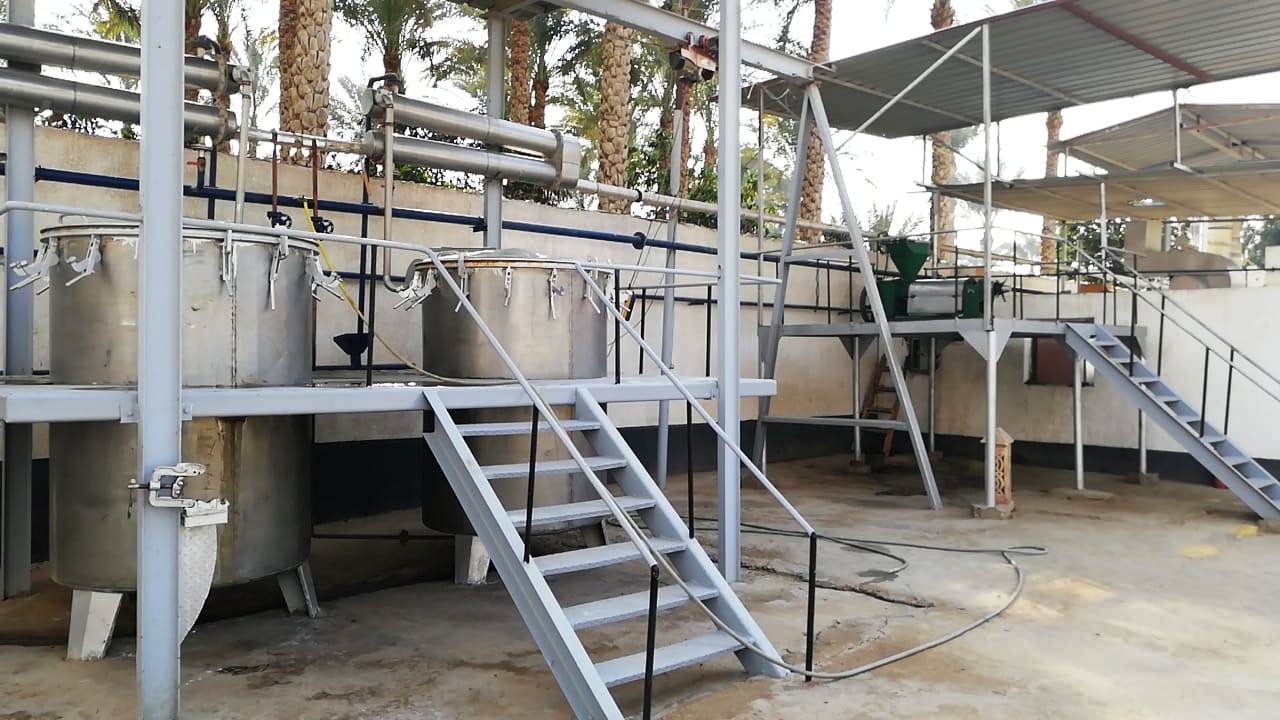Parsley Petroselinum crispum Essential Oil (Seed & Herb)
Login to view prices
Common name: Parsley
Latin name: Petroselinum crispum (Mill.)
Family: Apiaceae (Umbelliferae)
Other names: Engl.: garden parsley, parsley, common parsley, curled parsley, moss curled parsley. Deu.: Petersilie, Suppenwurzel. Suom.: persilja. Sven.: persilja, bladpersilja, kruspersilja, rotpersilja, slätbladig persilja. Bot. syn.: Apium petroselinum L., Carum petroselinum Benth. & Hook. f., Petroselinum hortense auct., Petroselinum sativum Hoffm., Petroselinum tuberosum Bernh. ex Rchb., Petroselinum vulgare Lagasca.
Botanical Origin:
Common name: Parsley
Latin name: Petroselinum crispum (Mill.)
Family: Apiaceae (Umbelliferae)
Other names: Engl.: garden parsley, parsley, common parsley, curled parsley, moss curled parsley. Deu.: Petersilie, Suppenwurzel. Suom.: persilja. Sven.: persilja, bladpersilja, kruspersilja, rotpersilja, slätbladig persilja. Bot. syn.: Apium petroselinum L., Carum petroselinum Benth. & Hook. f., Petroselinum hortense auct., Petroselinum sativum Hoffm., Petroselinum tuberosum Bernh. ex Rchb., Petroselinum vulgare Lagasca.
Description:
Parsley is a hardy biennial, bearing greatly divided pinnately-compound and characterized by curled, crisped green leaves. Flowers are greenish-yellow in compound umbels, the flowering and fruiting plant reaches a hight of from 2 to 3 ft.
The fruit commercially called seed, are smooth, ribbed and ovate, and consists of two dried mericarps joined along the center commissure when fresh (but usually seperated in the commercial lots).
All parts of the plant, particularly the seed, contain a volatile or essential oil which is responsible for the pronounced odor and flavor of parsley; the oil can eb recovered by steam distillation.
Range & Habitat:
Parsley is is a biennial herb native to Mediterranean countries, Europe and western Asia and has been cultivated as a garden herb since antiquity.
The reported life zone for parsley is 5 to 26 ºC with an annual precipitation of 0.3 to 4.6 meters and a soil pH of 4.9 and 8.3. The plant prefers a rich, moist soil with good drainage.
Planting & Cultivation:
Parsley, similar to other members of the Apiaceae family, has seeds that have an erratic and low germination rate even under optimum field conditions. Seeds germinate slowly and unevenly in the cold, wet soils characteristic of early spring. The use of transplants under certain conditions such as limited acreage or roadside marketing of produce may be a preferred alternative.
Field preparation is similar to other small seeded crops. A fine seedbed is required. The usual procedure is to finish the soil after plowing and disc harrowing with rototillers and bed shapers. Rich moist soil with good drainage and a pH of 5.3 to 7.3 is preferred. Cover seeds no deeper than one-quarter inch. If working with heavy textured mineral soils, cover seeds with leaf mold, sand orpeat to avoid crusting.
Sowing rates vary greatly, from 12 to 20 lbs. in some locations toas high as 40 to 60 lbs. of seed per acre depending on soil and environmental conditions. Seeds should be sown in the spring as soon as soil can be worked. In the North, better results are achieved by starting plants indoors and transplanting them to open ground after danger of freezing weather is past.
Seed parsley into 60 inch raised beds with three or four rows, 18 to 22 inches apart on each bed. An alternative is to plant double rows on a 36 to 42 inch bed. Transplants may be spaced 4 to 8 inches apart on 36 inch rows. Customized cultivation equipment (e.g., ground driven basket cultivators) is required to cultivate between narrow rows and avoid damage to seedlings. Hoeing is a common method of weed control in the row even if herbicides are used or in states where herbicide product registrations have not been obtained. Research has shown that highest yields can be obtained with very high plant populations.
Fertilization:
The rate of fertilizer application will depend upon soil type and prior cropping history. A suggested N-P-K ratio of 1-1-1 or 3-1-2 should be used depending on soil test results. On heavy textured soils a single broadcast application of N-P2O5-K2O at a rate of 120-120-120 lbs. per acre will provide crop needs. Sidedress with N after the first cutting if a second cutting is desired. On well drained light textured soils and muck soils higher fertilization rates are frequently used. Generally, one-third of the fertilizer is broadcast. This is followed by two side dressings of N-P-K fertilizer and supplemented with N as required by soil test and crop needs.
Harvesting and Preparing for the Market:
Harvesting for the Fresh Market:
Parsley harvesting is labor intensive, with hand labor being the preferred method in order to obtain the least amount of crop damage acceptable for fresh market use. A worker may group a bunch of plants with the hand, slice the stalks with a knife and slip a rubber band around the cut stalks to maintain bunch integrity. Some markets may prefer parsley to be packed loose for bunching later. Parsley must be cut at least 1 to 1 1/4 inches above the crown if multiple cuttings are desired. Machine harvested fields are mechanically clipped 1 to 3 inches above the crown. The parsley is conveyed to trucks for transport to dehydrators. Multiple harvests by hand or machine are possible depending on crop quality.
In some states three seeding periods per year will give continuous harvesting from April through December (in the North). A summer sowing is fall harvested, a fall sowing may be successfully over-wintered for harvest in early spring and spring sowings are harvested in late spring through summer. The earliest harvest of the spring-seeded crop frequently brings the highest price because of superior quality as compared with the over-winter crop.
Hamburg, or turnip-rooted, parsley is very hardy and can withstand a moderate freeze in the open. Plants may be left in the ground until marketing, or may be dug and stored in trenches or a root cellar until marketing. Spreading hay over the crop in the field has been used to improve tolerance to severe freezing temperatures. Roots should be washed and discolored leaves removed before marketing.
Postharvest Handling:
For the fresh market, bunches of parsley should be washed and any faded or yellowing leaves discarded. Parsley may be packed and shipped hydrocooled or package iced to maintain crispness and fresh appearance. Parsley is shipped in wooden bushels or in wax, corrugated 1 1/9 bushel universal cartons. Optimum storage and handling temperatures are 32 to 36° F at 95% relative humidity.
Harvesting for the Parsley Seed Oil:
As soon as the seed is ripe, it should be harvested and carefully dried. The plants are collected, and after several hours of drying, the material is ready for threshing. The crude seed, after threshing is submitted to winnowing and finally sifted into various sizes.
The quantity of chaff resulting from the winnowing of the seed is so small that it can hardly be considered as distiller’s material.
Harvesting for the Parsley Herb Oil:
The overground herb should be harvested, like dill, when seed has formed but not yet matured; in other words, the herb bearing unripe seed should be distilled
Yield of seed per Acre:
In France, depending on the year, 800 to 1500 kg of parsley seed are obtained per hectare
Method of Extraction:
By Steam Distillation of the parsley herb or seeds
Parsley Seed Oil:
The distillation of parsley seed demands considerable experience and attention. Yield as well as quality, of the oil is considerably influenced by the maturity of the seed. Fully ripe seed gives the highest yield of oil; superannuated seed, a somewhat lower yield
Yield and flavor of the oil depend greatly upon the method of distillation, even minor factors as: slow starting of distillation, duration, speed, and other variations in the procedure, affect the yield and quality of the oil considerably
The volatile oil yield from normal seeds ranges within 2 and 7 % of oil and more commonly from 1.5 to 3.5 %
N.B. Oil distilled from chaff is of inferior quality.
Parsley Herb Oil:
It must be admitted that in general parsley seed oil is not quite characteristic of parsley leaves, and parsley seed oil is, therefore, only a sort of substitute for the more expensive herb or leaf oil. The latter, which truly represents the odor and flavor of parsley leaves, is obtained by steam distilling the flowering tops of the plants.
Unfortunately, the yield of the oil from leaves and flowers exclusively is so low (about 0.06 %) that prices become prohibitive.
It is advisable, therefore, to distill the over ground parts of the plant in a rather advanced phase of maturity. The herb should be harvested, like dill, when seed has formed but not yet matured; in other words, the herb bearing unripe seed should be distilled. The yield of oil from such plant material is about 0.25%. the more developed the seed, the higher the yield of oil, but its odor and flavor will then approach that of seed oil.
[1] Source: Simon, J.E., A.F. Chadwick and L.E. Craker. 1984. Herbs: An Indexed Bibliography. 1971-1980. The Scientific Literatureon Selected Herbs, and Aromatic and Medicinal Plants of the TemperateZone. Archon Books, 770 pp., Hamden, CT. The Essential Oils. By Ernest Guenther. 1950
Notes About seeds oil :
- Cultivation for the purpose of producing seed for distillation is actually not very common. Most of the seed for distillation is derived from surplus stock, since the parsley fruit loses its germinating power rapidly.
- Upon cooling, it may deposit crystals of Apiole, chemically a methoxymyristicin. This occurs especially in those oils distilled from German seed, contain so much apiole that are semisolid at room temperature. Oils distilled from French seed, on the other hand, contain much less apiole.
- Small, poorly developed and immature seeds yield oils of lower specific gravity and higher rotation, than oils from normal seed, the result probably, of the predominance of terpenes in such oils.
Notes about Herb Oil:
- For those who know parsley, it might be easier to describe the odor of the oil as being very similar to that of the fresh cut herb.
- Laevorotation of an oil indicates the presence of seed in the distillation material i.e the presence of seed in the leaf and stalk material changes the rotation from dextro- for leaf oil exclusively, to laevo-; however laevorotatory herb oil still possessed the characteristic odor and flavor of parsley leaves to varying degrees.
Adulteration & its Detection:
The oil is subject to much adulteration, especially with:
| Adulterant | Appropriate method for detection | Notes |
| Mixing of the various qualities of parsley oil (leaf, herb, seed) | Easily detected by optical rotation |
Additional information
| Weight | N/A |
|---|---|
| Dimensions | N/A |
| Oil Purity | 100% Natural & Pure without any chemical, flavor, food additive or carrier. |
| Type | Parsley Herb Oil, Parsley Seed Oil |
| Ship from | Egypt |
| Country of Origin | Egypt |
| Cultivation Type | Organic, Conventional |
| Oil Bulk Packaging | 25 kg HDPE Plastic Jerrycan, 50 kg HDPE Plastic drum |
| HS Code | 33012990 |
| CAS Number | 8000-68-8 |
| Oil Documentation Available | Allergen Free Certificate, Bovine Spongiform Encephalophathy (BSE) Certificate, Certificate of Analysis (COA), GMO Certificate, GRAS Status Statement, Halal Certificate, Herbal Origin Statement, KOSHER Certificate, Manufacturing Flow Chart, Material Safety Data Sheet (MSDS), Organic Certificate, Pesticide Residual Certificate, Researches & Studies, Technical Data Sheet (TDS), WADA Prohibited list Statement |
-
Login to view prices
Fenugreek is an herb that is similar to clover. It is native to the Mediterranean region, southern Europe, and western Asia. The seeds are used in cooking, in medicine, and to hide the taste of other medicine. Fenugreek seeds smell and taste similar to maple syrup. Fenugreek leaves are eaten in India as a vegetable. Fenugreek is taken by mouth for diabetes, menstrual cramps, high cholesterol, and many other conditions, but there is no good scientific evidence to support most of these uses.
Login to view prices Read more -
Login to view prices
-
Login to view prices
-
Login to view prices
-
Login to view prices
Tea Tree Infused Oil (Natural Tea Tree herbs or oil infused in Carrier Oil)
Login to view prices Read more







